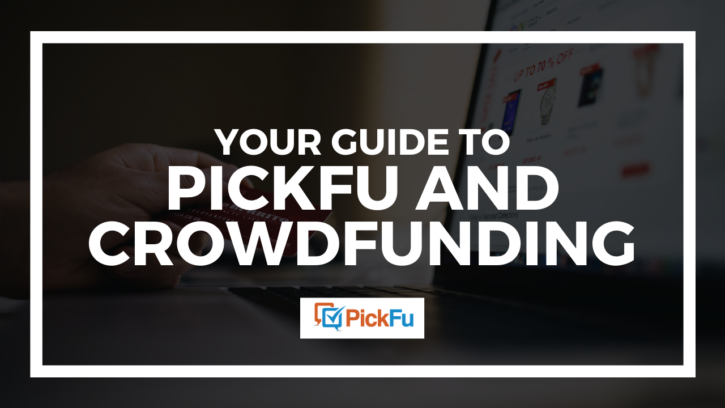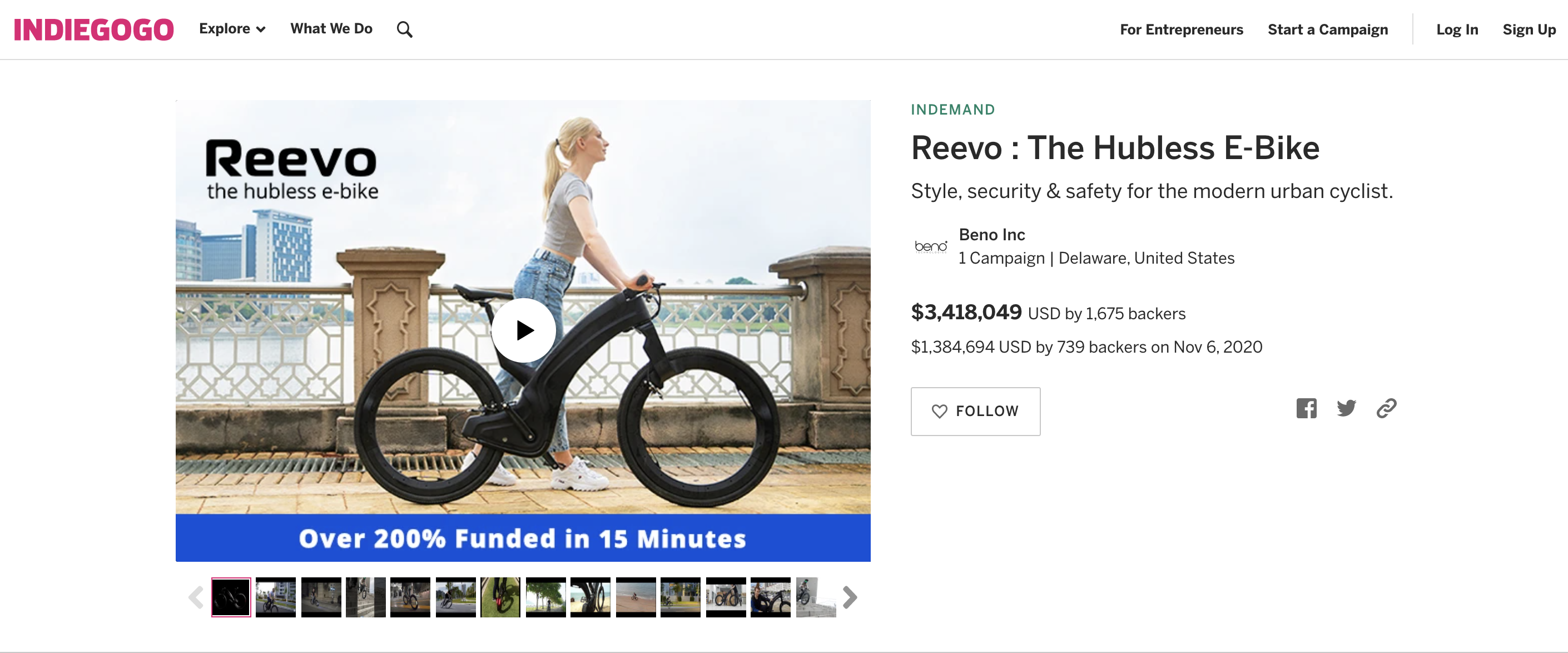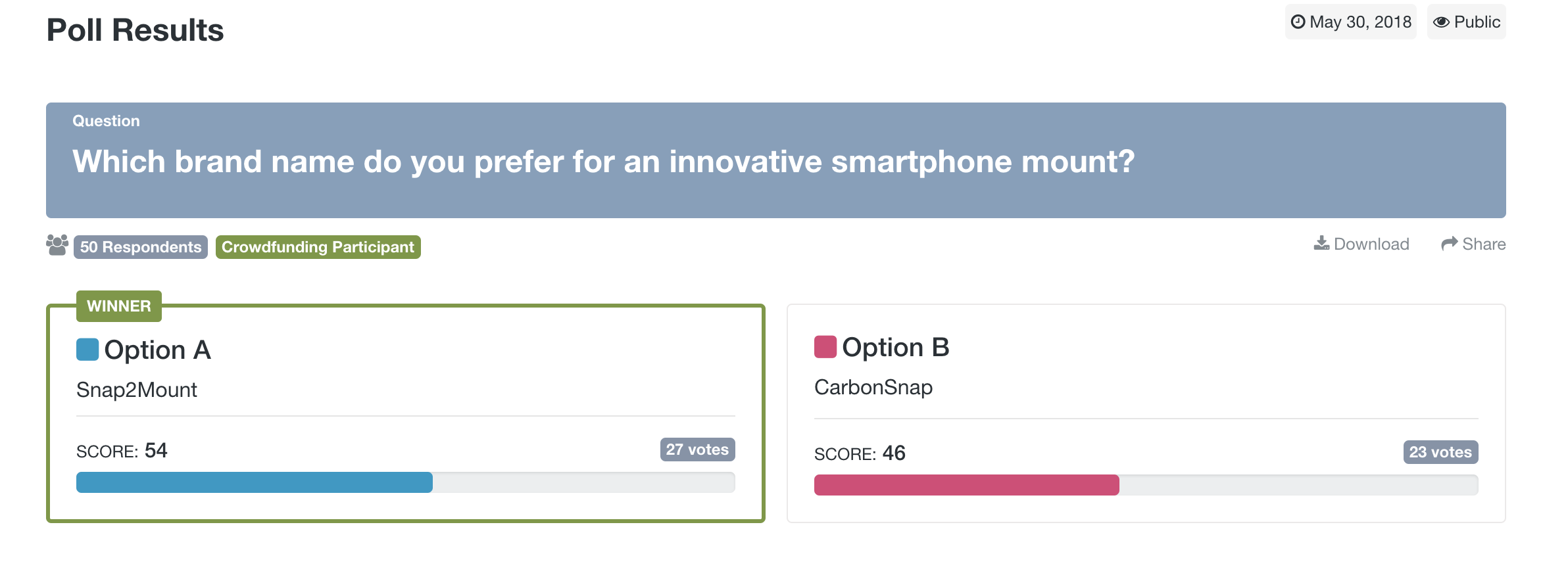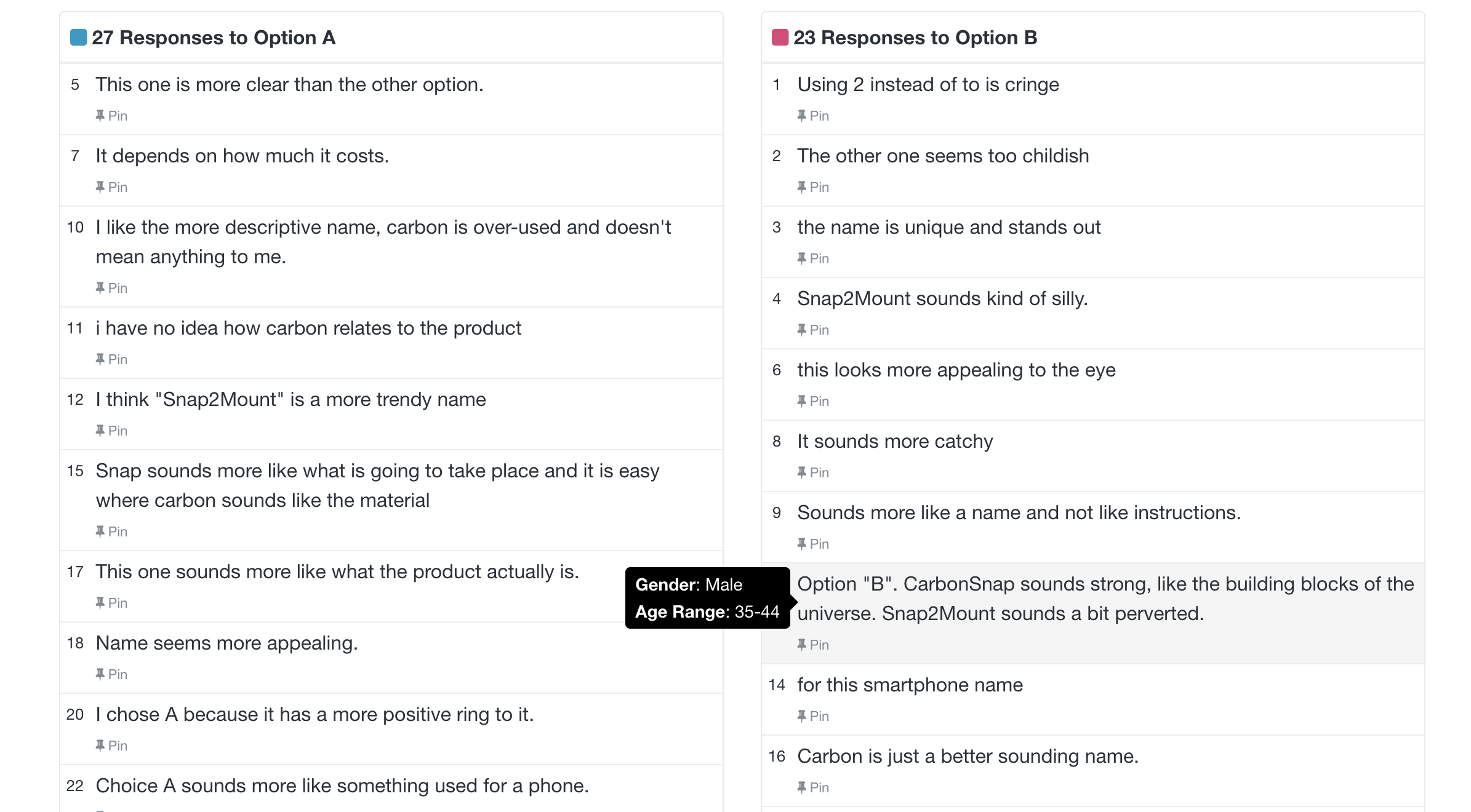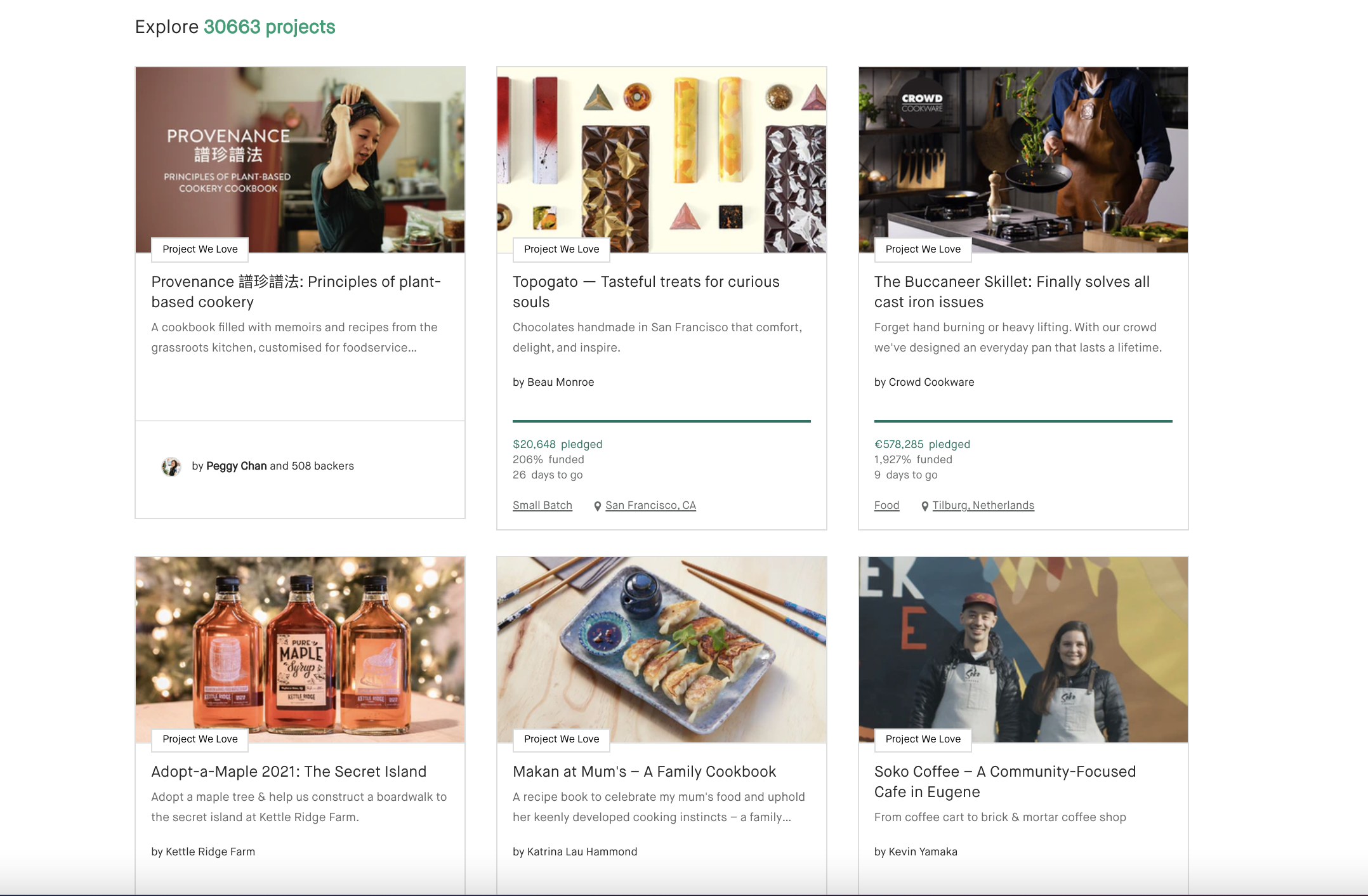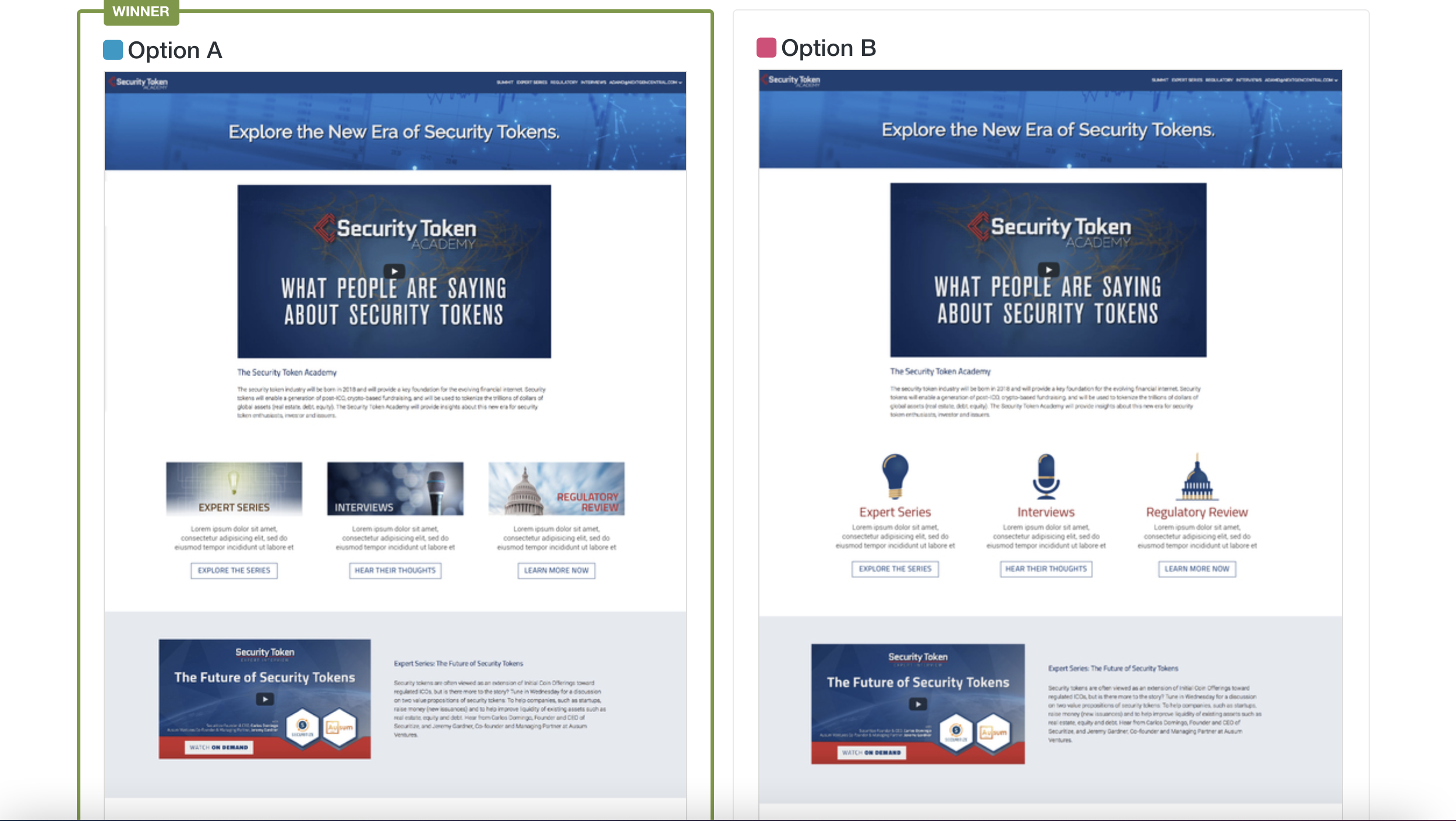No one had heard of the term crowdfunding when an entrepreneur named Michael Sullivan first used it in 2006. Since then, crowdfunding has grown into a multibillion-dollar global industry. The word and the concept are part of our daily lives. Scores of entrepreneurs take their ideas to Kickstarter, Indiegogo, GoFundMe, and other crowdfunding platforms with one goal: to raise enough money to turn those ideas into reality.
Success in crowdfunding hinges on the support of the crowd — your future customers. In this article, we’ll delve into how to create and launch a successful crowdfunding campaign.
What is crowdfunding?
Crowdfunding is an online method of raising money to finance a product, project, or business. Contributions come from a large group of people as opposed to a handful of investors.
Types of crowdfunding
The two types of crowdfunding you’re probably most familiar with are donation-based and rewards-based.
In donation-based crowdfunding, people give money to your campaign without getting anything in return. In rewards-based crowdfunding, people get a reward or perk for contributing — for example, a t-shirt with your logo or a service related to your product.
Equity-based crowdfunding, another type of crowdfunding, means that contributors to your campaign become part owners of your venture.
How does crowdfunding work?
Each crowdfunding platform works a little differently. In general, you set a monetary goal and time frame for your campaign. The platform on which you launch your campaign gets a percentage of the money you raise.
Kickstarter and Indiegogo, two of the most popular rewards-based sites, operate on this premise: if you hit your campaign goal, you keep the money you’ve raised. If not, your donors get their money back.
Indiegogo also offers flexible funding, which means you can keep the money you raise, even if you don’t reach your goal.
The ups and downs of crowdfunding
Crowdfunding helps create a community for your product. It gives entrepreneurs who might have a hard time getting financing through traditional channels a platform to pitch their ideas and be heard. From board games to biodegradable shoes, there’s plenty of variety and creativity to be found and funded.
Of course, there’s no guarantee you’ll reach your crowdfunding goal. The hard truth: on average, only 22% of crowdfunding campaigns are successful, according to Fundera.
How do you set up a crowdfunding campaign?
A crowdfunding campaign starts with your product or idea. Your crowdfunding campaign page gives it shape.
The key elements of a crowdfunding campaign page are as follows:
- title and tagline
- story
- photos and/or videos
- rewards
Your page also shows your crowdfunding goal, deadline, and progress.
The importance of consumer feedback in crowdfunding
You’ve done a ton of work to get to this point. You have photos, a video, and what you believe is a compelling story. You feel ready to launch your crowdfunding campaign and, fingers crossed, watch the donations roll in.
Not so fast.
Remember that statistic about how few campaigns actually get funded? Too often, it’s because you assume the audience for your product is waiting for you on the crowdfunding site, says crowdfunding adviser Khierstyn Ross, host of the “Launch and Scale” podcast.
Don’t assume. Get feedback from your potential customers before launching your crowdfunding campaign to understand their needs. Then, use that data to make your campaign page the best, most heartstring-tugging it can be.
How to use PickFu to launch a successful crowdfunding campaign
Crowdfunding is itself a form of idea validation. If your campaign gets funded, you might take that to mean you have a brilliant idea that will sell when it hits the market.
PickFu is an online polling platform that provides an extra early layer of validation, backed by data.
With PickFu, you’ll uncover what you can change or improve with your product (there’s always something) — and whether it’s worth launching your campaign in the first place.
PickFu is accessible and affordable, two qualities that crowdfunding entrepreneurs surely appreciate. It’s quick and easy to create a PickFu poll tailored to certain demographics and audience traits. For example, you can target only people who participate in crowdfunding.
A 50-person poll starts at $50. Within minutes of running a poll, you’ll get unbiased feedback in the form of votes and written comments. Respondents and their comments are continually vetted by the PickFu team to ensure the highest level of quality.
Let’s look at how to use PickFu at each stage of your crowdfunding campaign.
1. Ideation stage
Product idea
Is there a truly a need for your product? What sets it apart? PickFu can help you answer those questions.
In this open-ended PickFu poll, a user polled an audience of crowdfunding participants about an idea for a table tennis ball holder. The user didn’t include photos, only a description and the question, “Is this a good idea?”
Feedback was positive. However, respondents had more than a few buts that might make the entrepreneur reconsider. Here’s a sampling of their comments:
- “This is a good idea, although I think I have seen similar items made of mesh or net being sold currently.”
- “Of course it is, as long as it doesn’t get in the way of the players playing.”
- “It isn’t a bad idea. I just don’t know if it’s really been a problem that needs solving.”
- “This seems like a good idea as long as it’s not too cumbersome to reach into the bag to pick out a ball without dropping more balls on the floor or having trouble keeping the bag from tipping over.”
Product name
You might have several options for the name of your product or business. How do you know which one will resonate with customers? Split test them on PickFu. The poll results will help you understand why people prefer one name over another.
Here’s another PickFu poll, again targeted at crowdfunding participants, testing two names for a smartphone mount.
Option A, Snap2Mount, edged out CarbonSnap. Respondents’ comments revealed why. Though some didn’t care for the number 2 in Option A, they thought the name did a better job of conveying what the product does.
Product design
Before you spend any more time on your product design, upload images or renderings of your prototype and design options to a PickFu poll. Ask which is more appealing. Do any features stick out, for better or worse?
This is also a good opportunity to test your logo and packaging. Getting feedback on these elements before you start production could save you money in the long run. (Check out our video about a packaging redesign to see how much of a difference it makes.)
Pricing and competition
Use this time to do a competitive analysis of your product versus similar ones in the market. Ask the PickFu Panel if they’d be willing to pay your target price. Their answers can help inform your pricing and marketing strategies should your campaign get funded.
2. Campaign creation stage
Your crowdfunding project page is your one shot to get people’s attention. And as we all know, there’s a lot vying for our attention on these crowdfunding platforms.
Come out strong by optimizing each of the following page elements to create a can’t-miss page and campaign.
Title and tagline
The title of your campaign page has to stand out. That’s what people will read first as they scroll through a crowdfunding site — if they stop scrolling, that is. Some sites also let you add a tagline that appears under the title.
Craft tagline and title options using your product name, keywords, and catchy language. Then, split test them on PickFu to see if they’re attention-grabbing enough.
Photos
Your thumbnail image — the one you see as you browse a crowdfunding site — and the other photos on your page should be colorful and look professional.
Review our DIY product photography tips to make sure you’re using lighting, backgrounds, and angles to full effect. Upload your image options to PickFu for respondents to choose a favorite.
Video
A campaign page that features a pitch video raises four times more money than one without a video, according to Indiegogo. That’s huge.
Make sure the effort you put into your video pays off. Present it to your target audience first on PickFu. Is it too long or not long enough? Does it feature your product effectively? How’s the sound quality? What feelings does it evoke, and do they match what you want viewers to feel?
Use this qualitative feedback to edit your video and polish your messaging.
Story
They say no one reads anymore. Put thought into your campaign title, photos, and video, and your potential customers will want to stay and read your story.
Your project description should explain the who, what, and why behind your product.
Does the copy strike the right tone and communicate your purpose? Does it answer questions your backers might have? Will someone want to donate after reading it? Ask in a PickFu poll and edit accordingly.
Backer levels and rewards
Rewards help create excitement for your product. Take your proposed reward tiers and perks to PickFu and see what the crowd thinks. You might come away with different pricing, backer levels, or ideas for other rewards.
3. Pre-launch phase
Pre-launch is the dress rehearsal before the main event. Dig into the insights you’ve received on PickFu. Run a follow-up poll (or a few!) to test your final creative assets.
Most crowdfunding platforms offer email marketing and other tools to communicate with your supporters. It’s not too early to draft email copy and test it on PickFu before your campaign goes live to know you’re hitting the mark in tone and calls-to-action.
If you haven’t set up a website apart from your campaign page, now’s the time. As with the elements of your campaign page, your website should be thoughtful in its messaging, imagery, and layout. Upload screenshots of your site and test those on PickFu.
As you can see, you won’t run out of ways to use PickFu for crowdfunding. Plan and poll your potential customers in advance and you’ll be in the best position to launch a successful crowdfunding campaign.
Explore our Help Center for more on how to create, run, and analyze results of your PickFu poll.
